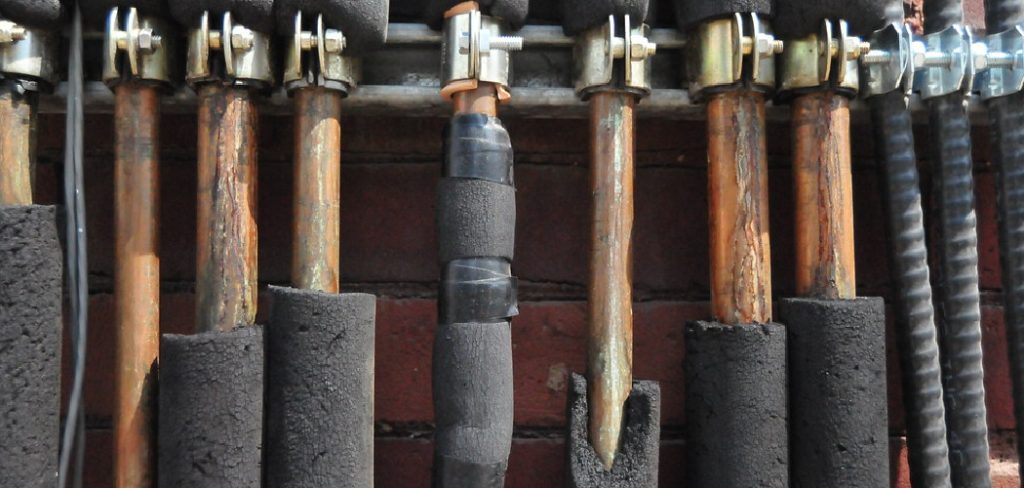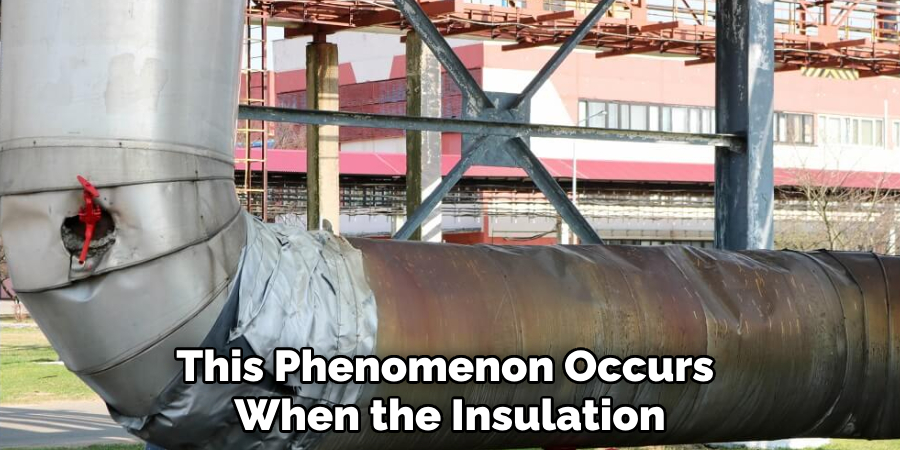Pipe insulation is crucial for maintaining energy efficiency and preventing heat loss; however, it can sometimes produce an unpleasant smell that disrupts the comfort of residential and workplace environments.

Addressing this odor is essential, as it may indicate underlying issues that could affect air quality and health. This smell commonly causes off-gassing from new insulation materials, mold growth due to moisture accumulation, or chemical reactions between insulation and pipes.
In this article, we will explore how to get rid of pipe insulation smell by identifying the source of the odor, discussing effective cleaning methods, and outlining preventive measures to ensure your space remains fresh and healthy. Understanding these aspects is vital for anyone dealing with problematic insulation materials and wanting to maintain a pleasant indoor atmosphere.
Identifying the Source of the Smell
Identifying the source of the unpleasant smell emanating from pipe insulation is the first step toward effectively addressing it. The nature of the odor can vary significantly depending on whether the insulation is new or old. New insulation often has a temporary smell resulting from the off-gassing of volatile organic compounds (VOCs) used in its production.
These odors typically dissipate over time, but they can be bothersome in the interim. In contrast, older insulation may emit more permanent, musty smells, which could indicate issues such as mold growth or material degradation, signaling the need for immediate attention.
Check for Mold or Mildew
Inspecting the insulation for signs of mold or mildew growth is critical, particularly if you notice a damp or musty smell. Mold thrives in areas with high humidity or moisture buildup, often resulting from leaks or inadequate ventilation.
Signs of mold growth include dark spots or a fuzzy texture on the insulation. If mold is present, prompt remediation is necessary to prevent further health risks and to improve indoor air quality.
Inspect for Chemical Smells
Certain types of insulation, especially foam-based products, can emit a chemical odor due to off-gassing. This phenomenon occurs when the insulation material releases VOCs into the air, potentially affecting air quality. Pay close attention to any unusual or persistent chemical smells, as they may indicate a need for inspection or replacement of the insulation.

Ventilation and Air Circulation
Improving ventilation and air circulation around insulated pipes is essential for effectively dissipating any unpleasant odors. Increasing airflow can help mitigate the effects of off-gassing and stale air, promoting a healthier indoor environment.
Increase Airflow in the Area
To enhance airflow, open windows to allow fresh air to circulate. This natural ventilation is particularly effective on breezy days. Additionally, using fans to create cross-ventilation can significantly improve air movement.
Positioning boxes or oscillating fans to blow air toward the insulated pipes can help carry odors away from living spaces. If you have installed ventilation systems, ensure they are functioning correctly and set them to operate when strong smells are present. Improved air circulation aids in dispersing odors, ensuring they don’t linger in the space.
Use an Air Purifier
Utilizing an air purifier equipped with a HEPA filter can greatly benefit spaces with pipe insulation issues. HEPA filters are designed to capture microscopic particles and eliminate airborne pollutants, including those responsible for unpleasant smells.
By placing the air purifier near the affected area, you enhance its efficiency in removing offensive odors from the air. Additionally, many purifiers come with carbon filters, which specifically target and neutralize chemical smells, further contributing to a fresher indoor atmosphere.
Run Exhaust Fans
Running exhaust fans is another effective method for managing pipe insulation smells, particularly in areas like basements, utility rooms, or laundry spaces where moisture can accumulate.
These fans help vent out stale air while reducing humidity levels, which can prevent mold growth. Ensure that exhaust fans are activated during peak usage times or when unpleasant smells are detected, as this action aids in expelling musty or chemical odors and promotes overall air quality in the space.
How to Get Rid of Pipe Insulation Smell: Cleaning the Area
Cleaning the area around the pipe insulation is essential for effectively eliminating unpleasant smells and maintaining a healthy indoor environment. Here’s a step-by-step guide to ensure that the insulation and surrounding surfaces are properly cleaned.

Step 1: Remove Surface Dust and Debris
Start by thoroughly cleaning the surface of the insulation and the surrounding area to remove dust, debris, and any potential mold spores. For this, it’s recommended to use a vacuum cleaner equipped with a HEPA filter, as it can effectively trap small particles without redistributing them into the air.
Alternatively, a slightly damp microfiber cloth can be employed to wipe down the surfaces, capturing dust and preventing it from becoming airborne. Ensure to clean any nearby surfaces to minimize the risk of lingering spores.
Step 2: Apply a Mild Cleaning Solution
If the inspection indicates that the insulation is safe to clean, apply a mild cleaning solution to address any remaining odors. A mixture of equal parts water and white vinegar, known for its deodorizing properties, serves as an effective all-natural cleaner.
Alternatively, a diluted bleach solution can be used if specified by the manufacturer. It’s crucial to always check the manufacturer’s guidelines before applying any liquid directly to insulation materials, as some substances might cause damage or exacerbate the smell.
Step 3: Deodorize with Baking Soda or Activated Charcoal
To further neutralize any lingering odors, consider using baking soda or activated charcoal, both of which are excellent at absorbing unpleasant smells. Place bowls of either substance near the insulated pipes to improve air quality over time.
As an additional method, lightly sprinkle baking soda directly on the surface of the insulation, allowing it to sit for a few hours before vacuuming it off. This approach not only helps absorb odors but also leaves the area smelling fresher.
How to Get Rid of Pipe Insulation Smell: Replacing or Repairing the Insulation
Step 1: Evaluate the Condition of the Insulation
To determine whether insulation needs replacing or cleaning, inspect it for signs of damage, such as tears, moisture intrusion, or mold growth. If the insulation appears discolored, has an unpleasant odor, or exhibits a musty texture, these may be indicators that it is beyond repair.
For older insulation that cannot effectively be cleaned, it is advisable to replace it entirely to avoid potential health risks and ensure optimal insulation performance. Regularly assessing the condition of insulation can help prevent issues from worsening over time.
Step 2: Remove and Dispose of Old Insulation Safely
When it becomes necessary to remove old insulation, especially if it harbors mold or other harmful materials, safety precautions are paramount. Wear protective gloves and a mask to minimize exposure to irritants and allergens. Carefully detach the insulation from the surrounding area, taking care not to disturb it too much to avoid releasing spores into the air.

Once removed, place the old insulation in sealed plastic bags to prevent contamination during transport. Dispose of it according to local regulations, as some materials may require special handling due to health hazards.
Step 3: Install New, Low-Odor Insulation
When installing new insulation, opt for materials designed to be low-odor and non-toxic. Fiberglass insulation is popular for its effectiveness and relatively low off-gassing, while foam products specifically labeled for minimal emissions can also be viable alternatives.
Follow the manufacturer’s installation guidelines closely to ensure a proper fit and optimal performance. Additionally, consider using techniques that enhance ventilation during and after installation to further minimize any potential lingering smells, creating a healthier indoor environment.
Preventing Future Smells
Control Humidity Levels
Maintaining proper humidity levels is crucial in areas with insulated pipes to prevent mold growth and associated odors. High humidity can create an environment conducive to mold development, leading to unpleasant smells. Consider using a dehumidifier, particularly in basements or utility rooms, to help control moisture levels and improve overall air quality.
Choose High-Quality Insulation Materials
Selecting high-quality insulation materials that are low in Volatile Organic Compounds (VOCs) can significantly reduce the risk of chemical odors and off-gassing. Materials such as mineral wool or cellulose insulation provide excellent thermal performance and are less likely to contribute to indoor air pollution, promoting a healthier home environment.
Regular Inspection and Maintenance
Regular inspections of the insulation and pipes are essential for catching any issues early, such as leaks or mold growth, before they develop into more significant problems. Schedule periodic checks to ensure everything is in good condition, addressing any signs of wear or damage promptly to maintain a fresh and odor-free indoor atmosphere.

Conclusion
In summary, effectively understanding how to get rid of pipe insulation smell involves several crucial steps. First, it’s essential to identify the source of the odors and enhance ventilation in the affected areas.
]Following this, thoroughly clean the insulation using appropriate methods, including applying mild cleaning solutions and deodorizing agents such as baking soda or activated charcoal. If required, consider replacing damaged insulation to prevent further issues.
Safety is paramount when dealing with insulation materials, particularly those potentially containing harmful chemicals or mold. Always wear protective gear during any inspection or cleaning process. Regular maintenance and prompt attention to any odors can significantly contribute to a healthier indoor environment, ensuring that your home remains safe and pleasant.
You can effectively manage insulation conditions and maintain overall air quality in your living space by staying vigilant.

